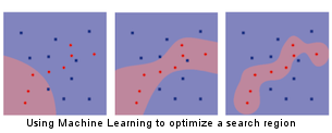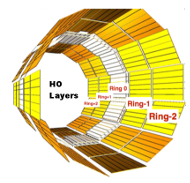Dark Matter is one of the mysteries in modern physics. While different astronomical and cosmological observations suggest that there is approximately 5 times more invisible than (electromagnetically) visible matter, its existence can only indirectly be interfered from its various gravitational effects. Examples are the flattening of galaxy rotation curves, the strength of gravitational lensing or the structure of the cosmic microwave background. The latest results of the Planck satellite indicate that the Universe contains 4.9% ordinary matter, 26.8% Dark Matter and 68.3% Dark Energy.
At the present time, there is no direct (non-gravitational) prove for the existence of any form of Dark Matter, but in particle physics many theoretical extensions to the standard model exist that predict viable Dark Matter candidates. However, the experimental observations do not favor any specific new physics approach.
DM & SUSY
Dark Matter & Supersymmetry
Compact Muon Solenoid Experiment
Dark Matter & Supersymmetry

With the new data-taking at the highest energies ever, a new era for Dark Matter searches at the Large Hadron Collider (LHC) has begun. The LHC presently shows excellent performance and we are now accumulating large datasets giving plenty of room for our searches.

We conduct our experimental data analyses in the most general way and with the most sophisticated techniques. A variety of physical models are in our focus and we continuously improve our search sensitivity by employing specialized machine learning tools (arXiv:1601.02809) in our analyses.

In order to make best use of the vast amount of data expected at the future LHC we are deeply involved in several CMS upgrade projects, which concentrate on enhancing our ability to finally discover Dark Matter.
Our near-term detector work focuses on the HCAL Outer Calorimeter (HO) where we are establishing a novel trigger link between HCAL and the Muon detector. The HO photo-detectors have already been upgraded with Silicon Photo-Multiplier (SiPMs) during the last long shutdown (LS1), which led to excellent performance. DESY has played an important part in this upgrade. To finally exploit this performance more effectively, HO is integrated into the upgraded L1 Muon trigger. Also the upgrade of HO backend electronics in terms of the novel micro-TCA standard is presently developed and planned to be installed during the coming technical stop (YETS) of 2016-17.
We are looking forward to talented students interested in the new technologies, used in the analyses as well as in the detector work, to search with us for Dark Matter.
Open Projects for PhD Students and Postdocs:
Presently, we have an open PhD position at DESY/Hamburg (21 June 2019 until filled) and we are cooperating with the University of Aachen where we have additional doctoral positions (https://inspirehep.net/record/1737359).
● Search for Dark Matter e.g. in leptonic final states
● Development of advanced analysis techniques (machine learning)
● Establishing the trigger link and general commissioning of the HO
Please contact:
Dirk Krücker
Phone: +49 (0)40 8998 3749
E-Mail: dirk.kruecker@SPAMNOTdesy.de
Location: 01b / O1.207
Kerstin Borras
Phone: +49 (0)40 8998 9 4488
E-Mail: Kerstin.borras@SPAMNOTdesy.de
Location: 01b / O2.215